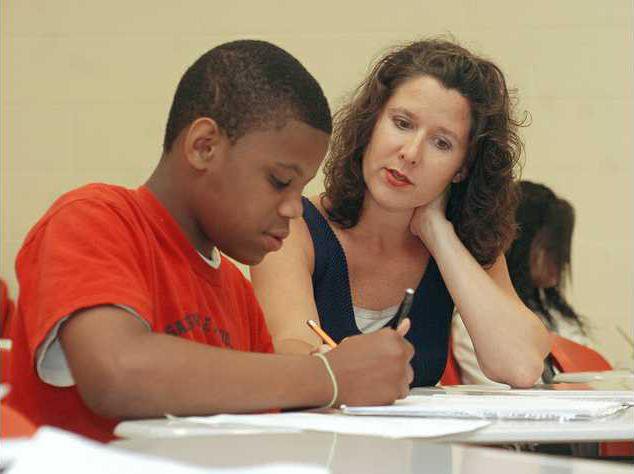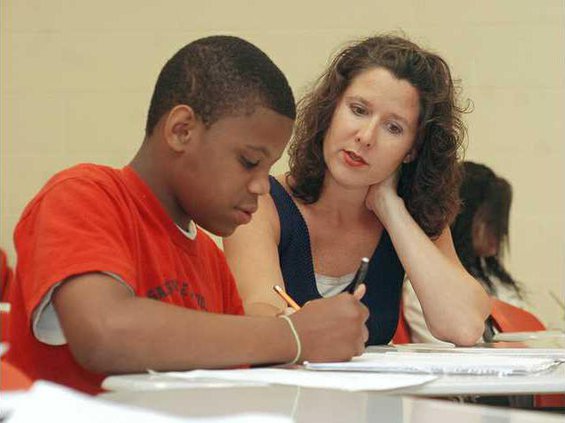Teachers endure lost class time with frustration, resolve
Coming up: Monday, read how furloughs are affecting parents and child care opportunities. Tuesday, see how furloughs affect school staff and college students considering careers in education.
Define furloughs in local schools:
a. Pay cuts for teachers.
b. Less time in class.
c. A burden on parents and child care programs.
d. A deterrent from entering the educational field.
When furlough days are announced as a way to fix the budget gap, it is difficult to remember all the different areas hit by just another day off from school.
“It’s a domino effect,” said Kim Davis, assistant principal for Fair Street International Baccalaureate World School. “This one touches this one, and that one touches that one.”
For the 2010-2011 school year, Hall County Schools announced eight furlough days and Gainesville City Schools announced 10 furlough days to combat the budget crisis. The days have been placed near traditional school holidays, and teacher planning time has dwindled.
Administrators and teachers aren’t questioning whether furloughs will have an effect on student achievement and learning. Instead, they’re wondering how much.
“Furloughs mean less with a capital ‘L’,” said Hall County Schools Superintendent Will Schofield. “You can play with the different nomenclature, but it’s less education for our boys and girls. Three years ago, we started to hear people talking about how we were falling behind the industrial world and countries that go to school 200 or 220 days.”
But then the economic downturn hit, and perspectives and priorities changed.
“As a father, I see that culture is saying what we value,” he said. “We’re willing to cut back on how long children go to school, and yet I don’t think our children have changed.”
Several of the furloughs are taken from teacher planning days and early release days, so the overall amount of instructional time hasn’t changed. But any decrease could be detrimental, Schofield said.
“Studies show that the most powerful variable is time on task. Students can learn anything if they have enough time, and as we condense class time, we know fewer children will master the concepts,” he said. “That’s irrefutable.”
The opportunities comes when furloughs cause schools to redefine what “time on task” means. Schofield is looking toward a 24/7 learning environment.
“The economic downturn has provided this unique opportunity. It may not mean 180 days in a row in the classroom, but we need to increase learning time and engagement elsewhere,” he said. “It’s human nature to surrender to the bunker mentality and become defensive, but this could really accelerate what might have taken us years to achieve.”
In Hall County, this means using resources a different way. Video-conferencing courses will be offered so a teacher at one school can simultaneously teach classes in other schools staffed with paraprofessionals, allowing students to take advanced classes or programs that may suffer from reduced staff resources.
“We hold so strong to our high school Advanced Placement, honors and gifted courses for our students,” Gainesville City Schools Superintendent Merrianne Dyer said. “You use people differently and see how you can maximize them throughout the day.”
While districts around the state dramatically cut arts or athletics, Hall County and Gainesville officials realized this ultimately cuts ties between students and schools.
“It sounds good to cut those, but they don’t cost much,” Schofield said. “When 60 percent of the student body derives engagement from those programs, you have to be careful eliminating what drives students to come to school with passion in the first place.”
With school districts across the nation cutting almost twice as many days as Hall County — such as 17 days in some Hawaii schools — students are reporting more stress and even feeling a perpetual “vacation mode.” Although local officials don’t see the cuts here to be as extreme, the effects of furloughs on students will develop over time, Dyer said.
“It’s simply reduced support for schools,” she said. “It won’t impact the schools that aren’t high poverty because students will make connections with what they learn in school. But those students with no one at home and problems of mobility will struggle.”
Some students already recognize this discrepancy.
“I don’t think it’ll affect those who excel in school,” said Thaddeus Webb, a seventh-grader at East Hall Middle School, who defined himself as a part of that group. “But others who have trouble might because they won’t have as much help.”
The most fragile students are younger, live in high poverty, have special needs or speak English as a second language. Gainesville schools have already seen a change with the economic downturn, Dyer said.
“Poverty is going up and enrollment is going up as people lose jobs and families move here to double up and stay with cousins,” she said. “There are more people in the house with the same income. If those children come to a slightly larger class with reduced support staff and go home to eight children instead of three and then receive less help from parents or don’t have a place to work, that’s tough.”
At schools such as Fair Street, where 98 percent of students receive free or reduced lunch, students don’t have the materials at home to supplement what they learn in school.
“When we give out books here, the kids walk out with them like they’re the Dead Sea Scrolls,” Davis said. “They’re thrilled to get a book and cherish them. The don’t get to do art or music or P.E. at home, and that’s why our children love to come to school. We don’t like to be away from them.”
Elementary school parents may be hit the hardest when it comes to securing day care services for their children, but middle school parents face the debate of leaving their students at home.
“Many may be OK to stay at home and make themselves breakfast, but do we want them to stay at home unsupervised?” said Karla Swafford, who is moving from principal at Oakwood Elementary School to West Hall Middle School. “Adolescents need us more than ever, and they need us to help them even more so to make good choices. Is it OK to go over to that friend’s house?”
High school students will most likely see the least impact when it comes to changes in instructional time, Johnson High School Principal Damon Gibbs said.
“Some people disagree, and I would never advocate taking away instructional days, but when it’s appropriate, these days were chosen to have a minimal impact,” he said. “Four days off should have a minimal effect, and the two days prior to Thanksgiving break were pretty low key days on our school schedule anyway.”
As high schools transition from the four-block schedule to the seven-period day, changes in class time plus furloughs could hit some students, said Melissa Barrett, an upcoming junior at West Hall High School.
“Four classes was a perfect time frame, and it helped us to feel like we were different and better than the middle school,” she said.
“I don’t think it’ll affect me as much because I’ll be in the set International Baccalaureate program, but it could mess some students up.”
To combat any negative changes, the community should come together to bolster students’ learning, said McEver Arts Academy Principal Catherine Rosa.
“It’s not just the school’s job to educate,” she said. “The library system and parks and rec could get involved, and museums could offer free days for kids. We should all be behind this and give a little bit because our kids deserve it and it benefits everybody in the end.”



